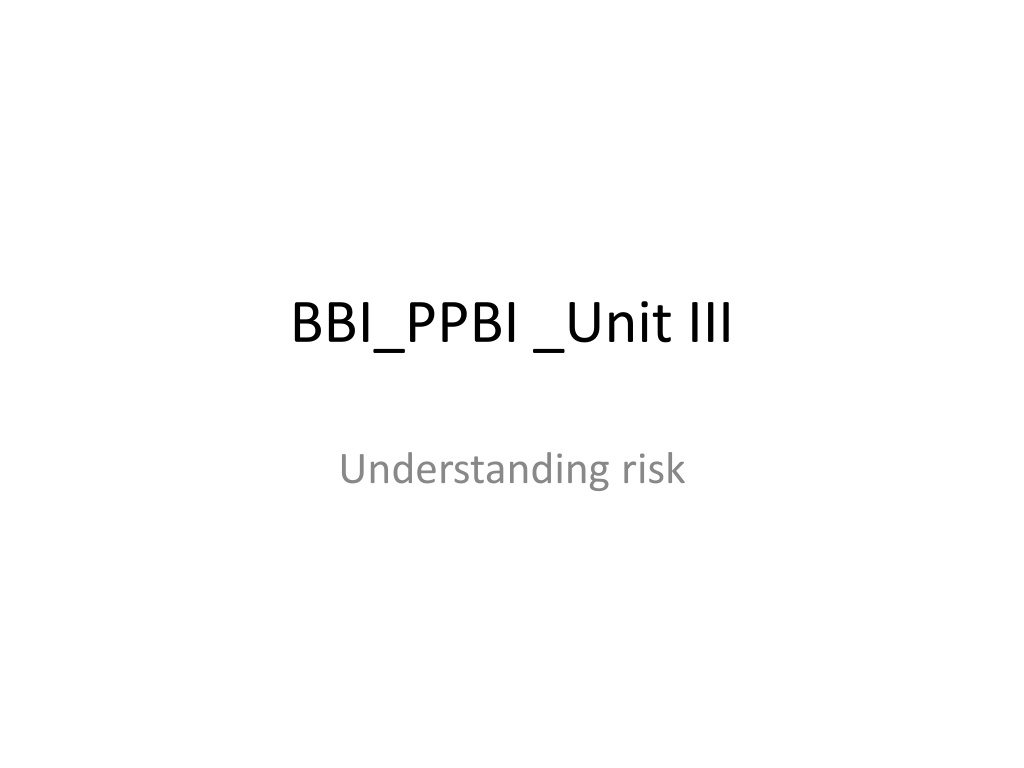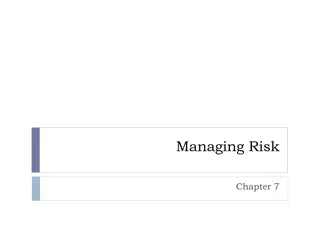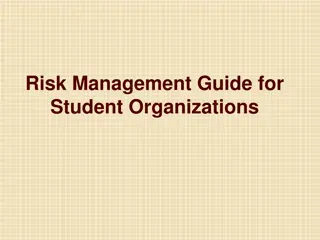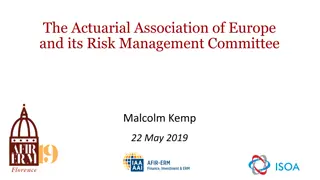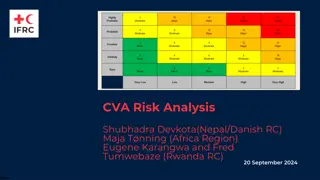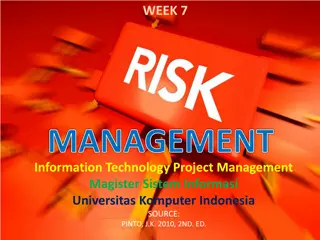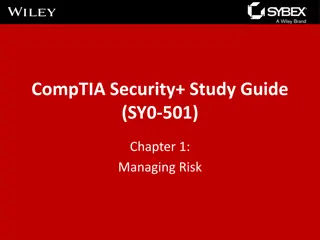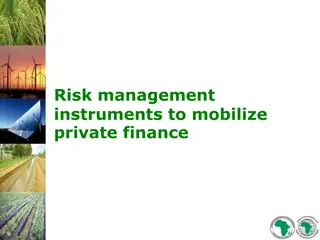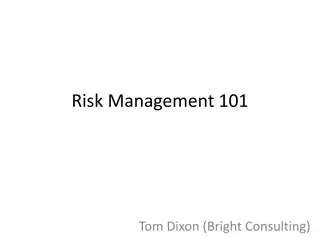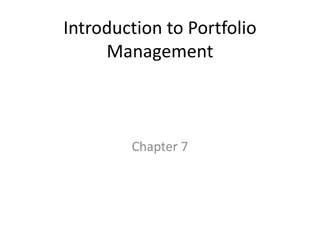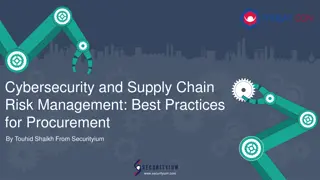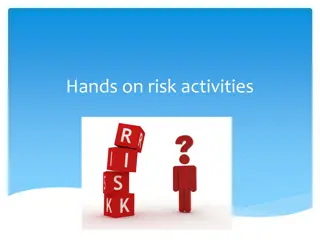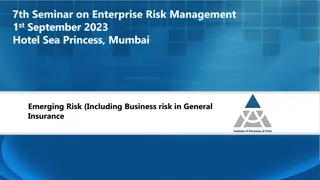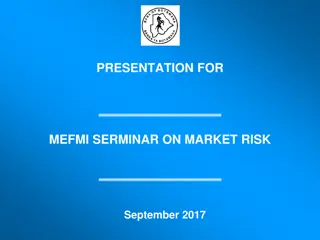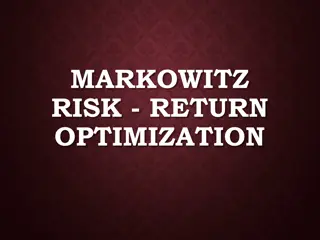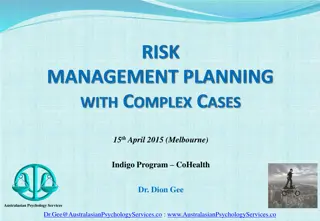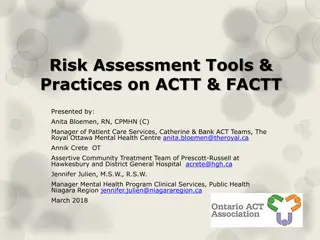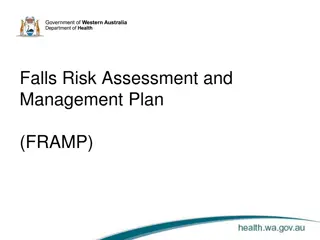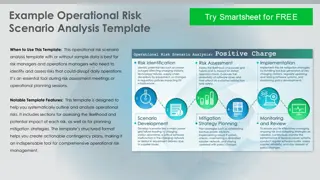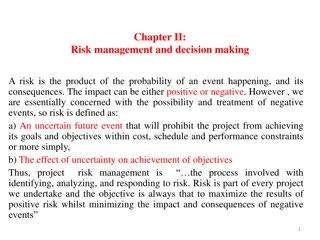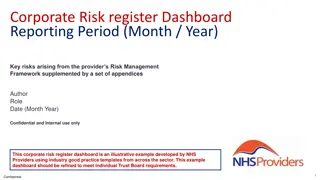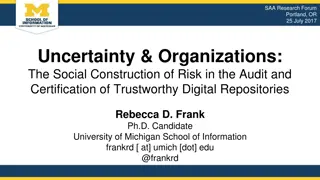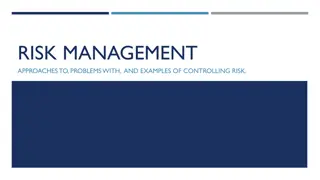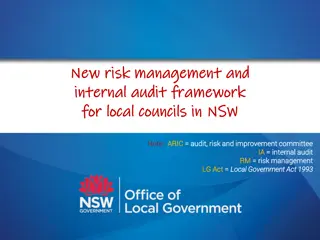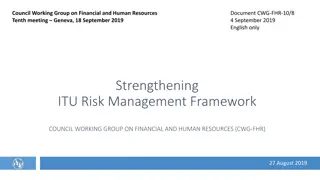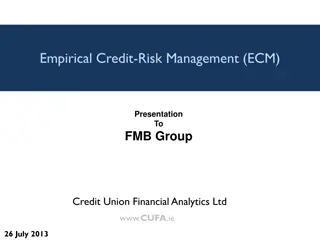Understanding Risk Management and Types in Business
Risk is the degree of uncertainty associated with a possible outcome. It involves hazards, perils, and various types such as business risk and individual risks like earning and medical expenses. Classification includes financial and non-financial risks, while methods of handling risks include identification, prevention, reduction, shifting, acceptance, and spreading. Risk management is a scientific approach to minimizing the occurrence of losses.
Download Presentation

Please find below an Image/Link to download the presentation.
The content on the website is provided AS IS for your information and personal use only. It may not be sold, licensed, or shared on other websites without obtaining consent from the author. Download presentation by click this link. If you encounter any issues during the download, it is possible that the publisher has removed the file from their server.
E N D
Presentation Transcript
BBI_PPBI _Unit III Understanding risk
Meaning of risk A variation in the possible outcome The degree of uncertainty associated with a particular loss Greater the accuracy with which the outcome can be predicted the lower is the risk. Risk is the possibility of an unfortunate occurrence Risk is the possibility of loss The combination of hazards Uncertainty of loss The tendency that actual results may differ from predicted results
Basic Terminology Peril : Cause of a risk and losses. E.g. Earthquake, flood , fire, criminal activities etc. Hazard : Condition that increases the frequency or severity of loss. E.g. absence of proper security or fencing , poorly maintained fire alarm system etc. Moral Hazard: It refers to the dishonesty of the insured person leading to increase probability of loss from given risk exposure. E.g. setting fire to your own house. Morale Hazard: This refers to attitude of indifference to losses that results out of a known fact that the said losses were insured. Catastrophic loss: It is a potential loss that is unpredictable such as flood, but is capable of producing an extra ordinary large amount of damage related to assets held in insurance pool. These are generally natural disasters like earthquake flood etc.
Business Risk & its types What is business risk? Price risk : Input price & Output price Credit risk Pure risk : Reduction in value of assets Market risk : Fashion, styles, preferences Operational risk Other risk
Risk for individual Earning risk Medical expenses risk Physical asset risk Financial asset risk
Classification of risk Financial and Non financial risk ( Money / Finance) Static risk & Dynamic risk ( Economic Envt.) Fundamental risk and Particular risk ( Group) Pure risk and Speculative risk Pure Risk : Personal risk, Property risk, Liability risk, risk arising out of failure
Methods of handling risk Risk identification Prevention of risk Reduction of risks Shifting risks Acceptance of risk Spreading risk
Risk Management Risk management is a scientific approach to dealing with pure risk by anticipating possible accidental losses and designing and implementing procedure that minimise the occurrence of loss or the financial impact of the losses
Importance To evaluate the risk of the business For effective handling of spreading the risk, monitoring and insuring against To introduce various plans and techniques to minimise the risk. To give advise ad make suggestions for handling the risk To avoid costs, disruptions and unhappiness in relating to risks. To fix the sum assured under the policy and to decide on whether to insure or not. To select the appropriate techniques or methods to manage the risks. To create awareness about risks among the people.
Risk management tool Risk control is a method by which a company identifies potential losses and devises strategies to reduce or terminate the losses. It is a technique for identifying potential risks in the operation of a firm, its technical and non-technical aspects. It will focus on minimization of risks Risk financing : Risk financing is a planning process to arrange for funds that are reliable and cost-effective to finance for losses that might happen. Risk financing and risk control are not mutually exclusive and are in fact, complementary to one another.
Risk Management Process / Steps Determination of objectives : Pre Loss & Post Loss Identification of risks Risk Analysis Considering Alternative: choose technique Implementation of the decision Evaluation & review
RMIS ( Risk Management Information System) Concept : A Risk Management Information System (RMIS) is an integrated computer information system used to aggregate risk data and to help decision makers evaluate business risks. This information includes risk exposure, protection measures and risk management.
